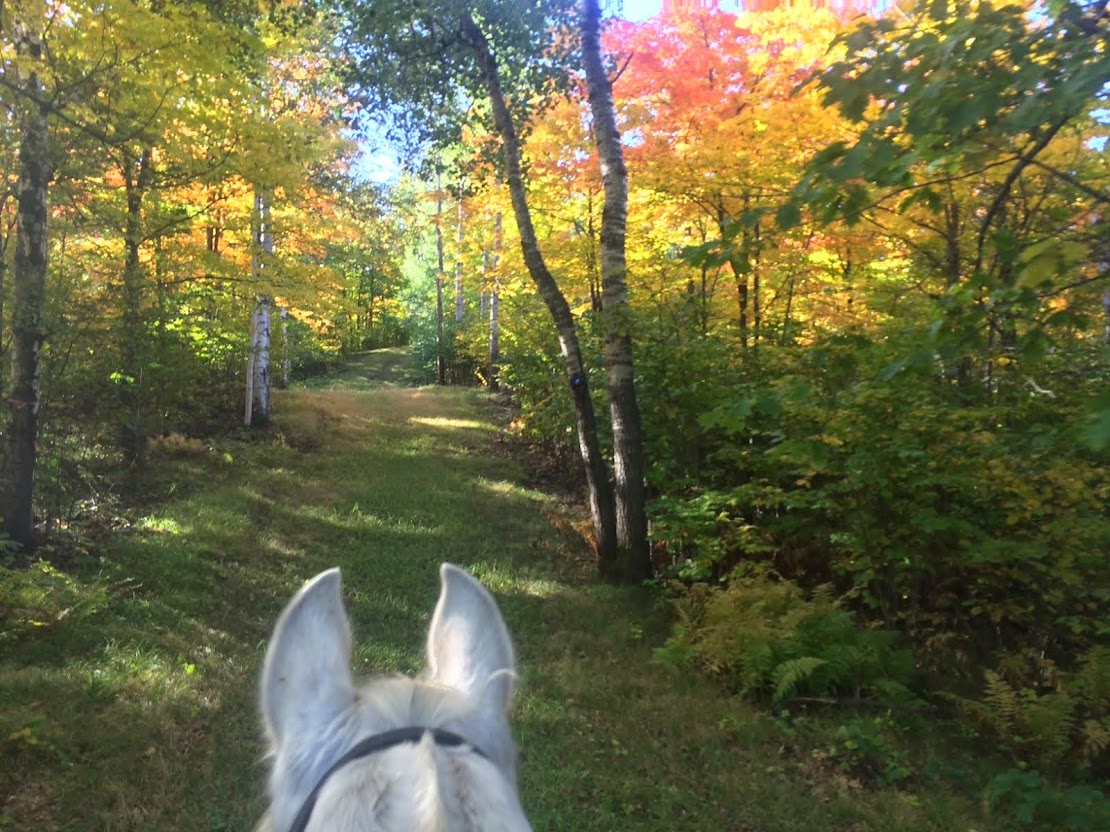This morning, as soon as I neared Rhio in the pasture, I could tell something wasn't quite right with his face. The left side just below the facial crest (bony prominence between the eye and the nostril) looked particularly dark. It turns out it was dark because it was wet; it was wet because it was coated in tears. His eye was swollen, painful, and leaking tears down his face (also he had been rubbing on his front leg, and his left carpus was discolored as well). Poor guy!
I brought him up to the gate, tied him to a post, and hurried home (across the road) to grab my eye-related supplies. The first concern with any eye issue is whether the cornea is injured or not. I suspected not, since he was willingly opening the eye (except of course when I wanted to look at it - then he'd squint it shut tight like a clam shell. Horses have incredibly strong eyelid muscles!). With the help of a little sedation, I stained the eye with bright green fluorescein dye. This dye will stick to any corneal injury, highlighting it so it can be seen. As it did not stick to his cornea, it confirmed that there was no corneal injury. The conjunctiva (pink membranes on the inside of the eyelids and eye socket) was very swollen and bright pink, and the likely source of the excessive tearing and soreness. I flushed the eye thoroughly and looked for any foreign matter, like a piece of a plant, which could have gotten lodged anywhere around the eye. With that search turning up empty, thankfully, I can confirm that he has a simple case of conjunctivitis, or inflammation of the conjunctiva. This is a really common condition in the late summer, as the face flies swarm around the horses' eyes and feed off tears and secretions. They carry bacteria on their feet and mouthpieces, depositing these in the horses' eyes and potentially causing minor infections and inflammations. This condition is somewhat similar to pinkeye in kids (or cows).
 |
| Rhio's sore and swollen left eye. Note the upper eyelashes are pointing somewhat down to the ground. This is a key indicator of a painful eye in a horse. |
 |
| Normal right eye. Note the eyelashes point out - parallel with the ground. (also you can see his eye is fully open on this side) |
 |
| Green fluorescein dye around his eye. It would stick to any corneal injury. |
 |
| The pink conjunctiva of his upper eyelid - swollen and bright pink. |
This is a minor condition with very little risk of future complications. It can be easily cleared up with eye ointments containing broad-spectrum antibiotics with or without steroid (for inflammation). A little systemic anti-inflammatory medication can help the swelling go down and make the horse more comfortable. A fly mask will protect the eye from further contamination by the flies, and help filter the sunlight which can make a painful eye even more painful. I have almost all of these things on hand, and was able to get Rhio on the mend. But here's what gets my goat: Rhio has been wearing a fly mask during daylight hours since his arrival in Colorado. The other five horses in his herd do not wear fly masks. I am cognizant of the risk of conjunctivitis in late summer and take preventative measures. So why is MY horse the one that gets it? Geesh!
By this evening, his eye was much less swollen and much more comfortable. He was waiting near the gate for his supper, and has clearly figured out how to get into the flowing waterway that borders his pasture, as his legs were muddy. I don't know if he was cooling off in the water, drinking, or merely eating the lusher grass on the bank. But it doesn't surprise me in the least that he's discovered the joys of the drainage ditch.
 |
| Droopy lower lip - still a little sleepy from his sedation. |






It could be he is more reactive having moved to a new environment. Sort of an alergic reaction. Glad to know it wasn't serious.
ReplyDelete